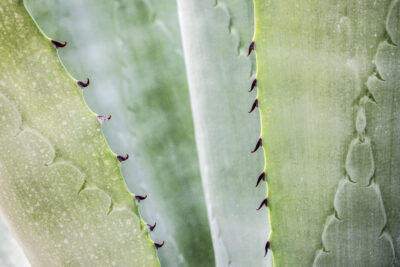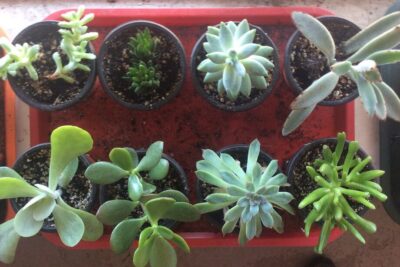
Essential Tips for Promoting Healthy Succulent Growth

Succulents have become increasingly popular as indoor and outdoor plants due to their unique and eye-catching appearance, as well as their low maintenance requirements. These plants are known for their ability to store water in their thick, fleshy leaves and stems, making them highly resilient and adaptable to various environments. However, to ensure that succulents thrive and grow healthily, it is important to provide them with the right care and conditions.
We will discuss some essential tips for promoting healthy succulent growth. We will cover topics such as choosing the right soil mix, providing adequate sunlight and temperature, watering techniques, and fertilization. Additionally, we will explore common problems that succulents may face, such as overwatering, pests, and diseases, and how to prevent and address these issues. By following these tips, you can enjoy the beauty of your succulents and help them flourish for years to come.
- Provide adequate sunlight for your succulents
- Water your succulents sparingly to prevent overwatering
- Use well-draining soil to promote healthy root growth
- Avoid overcrowding your succulents to prevent competition for resources
- Protect your succulents from extreme temperatures and frost
- Fertilize your succulents occasionally to provide necessary nutrients
- Prune your succulents to maintain their shape and encourage new growth
- Be mindful of pests and take necessary measures to prevent infestations
- Rotate your succulents regularly to ensure even growth and sun exposure
- Keep a watchful eye for signs of disease or damage and take prompt action
- Frequently Asked Questions
Provide adequate sunlight for your succulents
1. Choose the right location
Succulents thrive in bright sunlight, so it is important to choose a location that receives at least 6 hours of direct sunlight each day. Place your succulents near a south or west-facing window where they can get the maximum amount of sunlight.
2. Gradually introduce outdoor sunlight
If you have indoor succulents and plan to move them outdoors, it is crucial to acclimate them to the increased sunlight gradually. Start by placing them in a shaded area for a few hours a day and gradually increase their exposure to direct sunlight over a period of a few weeks. This will prevent sunburn and ensure healthy growth.
3. Protect from intense afternoon sun
While succulents love sunlight, intense afternoon sun can sometimes be too harsh for them. If you live in an area with scorching summers, provide some shade during the hottest part of the day to protect your succulents from sunburn. You can use a sheer curtain, shade cloth, or move them to a slightly shadier location during these hours.
4. Rotate your succulents
Succulents tend to lean towards the direction of the sun, which can result in uneven growth. To promote even growth, rotate your succulents every few weeks, so all sides receive an equal amount of sunlight. This will help prevent your succulents from becoming lopsided and ensure they grow straight and healthy.
 Common Challenges in Succulent Cultivation: How to Overcome Them
Common Challenges in Succulent Cultivation: How to Overcome Them5. Watch out for signs of inadequate sunlight
If your succulents are not receiving enough sunlight, they may start to stretch or become leggy. This is a sign that they are reaching for more light. If you notice elongated stems or leaves, it's time to provide them with more direct sunlight. Adjust their location or consider using artificial grow lights to supplement their light requirements.
Water your succulents sparingly to prevent overwatering
One of the most important tips for promoting healthy succulent growth is to water your succulents sparingly. Succulents are adapted to survive in arid environments and have evolved to store water in their leaves, stems, and roots. Overwatering can lead to root rot and other issues, so it's essential to find the right balance.
Here are some guidelines to follow when watering your succulents:
- Check the soil moisture level before watering. Stick your finger about an inch into the soil. If it feels dry, then it's time to water. If it's still moist, hold off on watering for a few more days.
- Water deeply but infrequently. When you do water your succulents, make sure to thoroughly saturate the soil. Let the water soak in until it drains out from the bottom of the pot. Avoid shallow watering, as it can encourage shallow root growth.
- Use a well-draining soil mix. Succulents prefer soil that drains quickly, preventing water from sitting around the roots for too long. You can either purchase a specialized succulent soil mix or make your own by combining regular potting soil with coarse sand or perlite.
Remember, it's better to underwater your succulents than to overwater them. Succulents are more likely to survive a period of drought than they are to recover from overwatering. Be patient and observant, and adjust your watering schedule as needed based on the specific needs of your succulents and the environmental conditions they are in.
Use well-draining soil to promote healthy root growth
When it comes to succulent care, one of the most crucial factors to consider is the type of soil you use. Succulents thrive in well-draining soil, as it allows excess water to flow through quickly, preventing root rot and other issues caused by overwatering.
It is recommended to use a specialized succulent or cactus mix, which is typically a blend of organic matter, sand, and perlite. This combination helps to create a porous medium that allows water to pass through easily, keeping the roots healthy and preventing waterlogged soil.
 Fixing Brown Leaves on Succulents: Troubleshooting Guide
Fixing Brown Leaves on Succulents: Troubleshooting GuideWhen planting your succulents, ensure that the pot or container has drainage holes to facilitate proper drainage. This will prevent water from pooling at the bottom, which can lead to root rot and other fungal diseases.
Remember to water your succulents sparingly, allowing the soil to dry out completely between waterings. This will mimic their natural habitat and encourage the roots to grow deeper, promoting overall plant health and longevity.
By using well-draining soil and following proper watering practices, you can ensure that your succulents have a solid foundation for healthy root growth, leading to vibrant and thriving plants.
Avoid overcrowding your succulents to prevent competition for resources
When it comes to succulents, it's important to remember that they need space to thrive. Overcrowding your succulents can lead to competition for resources such as sunlight, water, and nutrients. To promote healthy succulent growth, it's essential to give each plant enough room to spread out and grow.
One way to avoid overcrowding is to choose the right size of pots for your succulents. Make sure that the pot is large enough to accommodate the plant's root system and allow for future growth. If you notice that your succulents are becoming cramped in their current pots, it may be time to consider repotting them into larger containers.
In addition to pot size, it's also crucial to consider the spacing between individual succulents. When planting multiple succulents together, it's best to leave a few inches of space between each plant. This spacing will not only prevent overcrowding but also allow for better air circulation, reducing the risk of fungal diseases.
Furthermore, overcrowded succulents can also result in etiolation, a common problem where the plants stretch out and become leggy. This occurs when succulents don't receive enough sunlight due to being overshadowed by neighboring plants. By giving your succulents enough space, you can ensure they receive adequate sunlight, promoting compact and healthy growth.
 Is My Leaning Succulent a Problem? Get Answers Here!
Is My Leaning Succulent a Problem? Get Answers Here!Overcrowding your succulents can hinder their growth and overall health. By choosing the right pot size, providing enough spacing between plants, and ensuring they receive adequate sunlight, you can promote healthy succulent growth and enjoy a thriving succulent garden.
Protect your succulents from extreme temperatures and frost
When it comes to succulent care, one of the most important factors to consider is protecting your plants from extreme temperatures and frost. Succulents are known for their ability to thrive in arid conditions, but they are not immune to the damaging effects of temperature extremes.
During hot summer months, it is crucial to provide your succulents with adequate shade to prevent them from getting sunburned. Place them in areas where they can receive filtered sunlight or use shade cloth to protect them from the intense rays of the sun. Additionally, avoid placing your succulents near windows or glass doors where they can be exposed to direct heat.
On the other hand, during winter months, it is important to shield your succulents from frost. Frost can cause severe damage to the cells of your plants, leading to discoloration, wilting, and even death. To protect your succulents from frost, consider moving them indoors or to a sheltered area such as a greenhouse or covered patio.
Furthermore, if you live in an area with harsh winters, you can use frost cloth or blankets to cover your outdoor succulents during freezing temperatures. This will provide an extra layer of insulation and help protect them from the cold.
Remember, succulents are naturally adapted to survive in harsh conditions, but they still need your help to withstand extreme temperatures. By taking the necessary precautions, you can ensure the healthy growth and longevity of your succulent collection.
 Dolphin Succulent Care: Top Tips and Guidelines
Dolphin Succulent Care: Top Tips and GuidelinesFertilize your succulents occasionally to provide necessary nutrients
One of the key factors in promoting healthy succulent growth is providing them with the necessary nutrients. While succulents are known for their ability to thrive in nutrient-poor conditions, a little boost from fertilizers can go a long way in ensuring their optimal growth.
When it comes to fertilizing succulents, it's important to remember that less is more. These plants are adapted to survive in arid environments, where nutrients are scarce. Therefore, over-fertilizing can actually harm your succulents rather than help them.
Opt for a balanced, water-soluble fertilizer specifically formulated for succulents. It should have a low nitrogen content and higher phosphorus and potassium levels. Nitrogen promotes leafy growth, which is not ideal for succulents, as they primarily store water in their leaves and stems.
During the growing season, which typically spans from spring to early fall, fertilize your succulents once every four to six weeks. Be sure to dilute the fertilizer according to the package instructions to avoid burning the roots. Over time, you will develop a better understanding of your succulents' specific needs and adjust the fertilization frequency accordingly.
Remember, it's always better to err on the side of caution when it comes to fertilizing your succulents. If you notice signs of over-fertilization, such as burnt or discolored leaves, reduce the frequency or concentration of the fertilizer.
By providing your succulents with occasional doses of the right fertilizer, you are giving them the nutrients they need to grow and thrive. Just remember to strike a balance and practice moderation, as too much of a good thing can be harmful.
 Essential Care Tips for Growing an Elephant Trunk Succulent
Essential Care Tips for Growing an Elephant Trunk SucculentPrune your succulents to maintain their shape and encourage new growth
Pruning your succulents is an essential step in maintaining their shape and promoting healthy growth. It not only helps them maintain a compact and attractive appearance but also encourages new growth.
When pruning succulents, it's important to use sharp and clean tools to avoid causing damage or introducing infections. Start by identifying any dead or dry leaves, stems, or branches. These should be carefully removed using a pair of pruning shears or scissors.
Tip: When removing leaves or stems, make sure to cut them as close to the base as possible without damaging the healthy parts of the plant.
Another important aspect of pruning succulents is removing any leggy or elongated growth. This is especially common in succulents that don't receive enough sunlight. To rectify this, simply trim back the elongated stems or branches to a desired length using your pruning tools.
Additionally, if you notice any signs of overcrowding or overlapping growth, it's a good idea to thin out the succulent by removing a few stems or branches. This allows for better air circulation and reduces the risk of diseases.
Tip: Keep in mind that different succulent species have varying growth patterns and requirements. Research the specific pruning needs of your succulents to ensure you're pruning them correctly.
 Can Succulents Survive Winter Without Water? Tips for Winter Care
Can Succulents Survive Winter Without Water? Tips for Winter CareAfter pruning, it's important to give your succulents some time to recover before exposing them to direct sunlight or watering them. This will minimize the risk of sunburn or root rot.
Tip: If you're unsure about how much to prune, it's always better to start conservatively and gradually remove more if needed. Remember, you can always prune more, but you can't undo an excessive cut.
Regularly pruning your succulents will not only keep them looking tidy and well-maintained but also stimulate growth and encourage the development of new shoots. By following these essential pruning tips, you'll be on your way to promoting healthy succulent growth in no time!
Be mindful of pests and take necessary measures to prevent infestations
Pests can pose a significant threat to the health and vitality of your succulents. It is crucial to stay vigilant and take appropriate measures to prevent infestations. Here are some essential tips to help you keep your succulents free from pests:
- Inspect your plants regularly: Regularly inspect your succulents, both indoors and outdoors, for any signs of pest activity. Look for visible pests such as aphids, mealybugs, or spider mites, as well as any unusual patterns or discoloration on the leaves.
- Isolate infested plants: If you notice any signs of pest infestation, immediately isolate the affected plants to prevent the pests from spreading to other healthy succulents. Place the infested plants away from your other plants until the issue is resolved.
- Use natural pest control methods: Instead of resorting to harsh chemicals, consider using natural pest control methods to protect your succulents. For instance, you can use neem oil, a natural insect repellent, to treat common succulent pests. Dilute the neem oil according to the instructions and apply it to the affected areas of your plants.
- Maintain proper watering practices: Overwatering can create a moist environment that attracts pests. Be sure to water your succulents sparingly and avoid allowing water to accumulate in the saucers or trays. Succulents thrive in well-draining soil, so ensure that the soil dries out between waterings.
- Keep your growing area clean: Regularly remove fallen leaves, debris, and dead plant material from the vicinity of your succulents. These can provide hiding places for pests and increase the risk of infestations.
- Introduce beneficial insects: Consider introducing beneficial insects, such as ladybugs or predatory mites, to your succulent garden. These natural predators can help control common pests by feeding on them.
By following these essential tips, you can minimize the risk of pests and ensure the healthy growth of your beloved succulents. Remember, prevention is key, so stay proactive in keeping your plants pest-free.
Rotate your succulents regularly to ensure even growth and sun exposure
One essential tip for promoting healthy succulent growth is to regularly rotate your plants. Succulents have a natural tendency to grow towards the sun, which can cause one side to receive more sunlight than the other. By rotating them every few weeks, you can ensure that all sides of the plant receive an equal amount of sunlight, promoting even growth.
 Comparing Maintenance: Cactus vs Succulent - Which Requires Less Care?
Comparing Maintenance: Cactus vs Succulent - Which Requires Less Care?Rotating your succulents also helps prevent them from leaning towards one direction, which can lead to an unbalanced and unstable plant. By promoting even growth, you can ensure that your succulents maintain their beautiful shape and remain healthy.
Keep a watchful eye for signs of disease or damage and take prompt action
When it comes to promoting healthy succulent growth, it's crucial to stay vigilant and keep an eye out for any signs of disease or damage. Succulents are generally hardy plants, but they can still be susceptible to various issues that can hinder their growth and overall health.
Here are some essential tips to help you detect and address any problems:
- Inspect your succulents regularly: Make it a habit to examine your succulents on a regular basis, especially the leaves, stems, and roots. Look out for any unusual spots, discoloration, or wilting. Early detection is key to preventing further damage.
- Learn common signs of disease: Familiarize yourself with common signs of succulent diseases, such as rot, fungal infections, or pest infestations. Educating yourself about these issues will help you identify them more accurately.
- Isolate affected plants: If you notice any signs of disease or damage, it's crucial to isolate the affected plants immediately. This prevents the spread of the problem to other healthy succulents.
- Take prompt action: Once you've identified an issue, take immediate action to address it. Depending on the problem, you may need to remove affected leaves, treat with a suitable fungicide or pesticide, or adjust watering habits.
- Consult with experts: If you're unsure about the best course of action or need help diagnosing a specific problem, don't hesitate to consult with experts, such as horticulturists or experienced succulent enthusiasts. They can provide valuable guidance and advice tailored to your specific situation.
Remember, preventing and addressing disease or damage promptly is crucial for promoting healthy succulent growth. By staying observant and taking the necessary steps, you can ensure that your succulents thrive and remain vibrant for years to come.
Frequently Asked Questions
1. How often should I water my succulents?
Succulents should be watered sparingly, typically every 2-3 weeks. It's important to allow the soil to dry out completely between waterings to prevent root rot.
 Winter Care Tips: How to Help Succulents Survive the Cold Season
Winter Care Tips: How to Help Succulents Survive the Cold Season2. Do succulents need direct sunlight?
Yes, succulents thrive in bright, indirect sunlight. They require at least 6 hours of sunlight per day to maintain healthy growth.
3. Can I use regular potting soil for my succulents?
No, regular potting soil tends to retain too much moisture, which can cause root rot in succulents. It's best to use a well-draining succulent or cactus soil mix.
4. How often should I fertilize my succulents?
Succulents typically only require fertilization once or twice a year, during the growing season. Use a balanced, water-soluble fertilizer at half the recommended strength.
 Reviving Wilting Succulents: The Power of Proper Care
Reviving Wilting Succulents: The Power of Proper CareIf you want to read more articles similar to Essential Tips for Promoting Healthy Succulent Growth, you can visit the Care and Maintenance category.






You Must Read